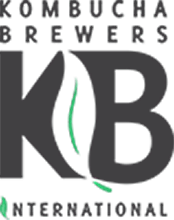ENHANCEMENT OF BIOCELLULOSE PRODUCTIVITY THROUGH OPTIMIZATION OF CULTURAL CONDITIONS AND GAMMA RADIATION
Authors:
Mohamed M. Roushdy, Abbas A. El-Ghamery, Ali A. Hammad, Salwa A. Abou EL-Nour, Nasser H. Mohammad
Abstract:
The optimum fermentation conditions for the production of biocellulose (BC) by the isolated strain Komagataeibacter rhaeticus K were determined. The isolate gave the highest cellulose production when grown on glucose ethanol medium (GEM) and was able to produce cellulose at 20-35°C with a maximum at 30°C. BC production was obtained at pH 3-8 with a maximum at pH 5. Effect of gamma radiation induced by coblet-60 on K. rhaeticus K cells was investigated. A cellular survival curve versus absorbed doses was studied to determine the sensitivity of bacterial cells to gamma rays. The results showed D10-value was equaled to 0.38kGy. To enhance the ability of K. rhaeticus K for BC production, the isolate was subjected to different doses of Gamma ray and the optimum BC yield was obtained at 0.4kGy. The maximum production of BC was obtained with using the improved medium (5% (w/v) glucose, 0.3% (w/v) yeast extract, 0.3% (w/v) peptone and 2% (v/v) ethanol). Using fresh culture of K. rhaeticus K that exposed to 0.4kGy of gamma radiation and grown under the optimized culture conditions, 9.3g/l dry cellulose was produced after 7 days of static cultivation, although this isolate produced only 4g/l in the standard medium.
Keywords: cells, cellulose, ethanol, glucose, ph, radiation
Country: Egypt
Citation: Egypt. J. Biotechnol. Vol. 52, June, 2016.
Study Mailing Address:
Botany and Microbiology Department, Faculty of Science, Al-Azhar University, Cairo, Egypt
Date Updated: February 4, 2021
 0 people like this study.
0 people like this study.